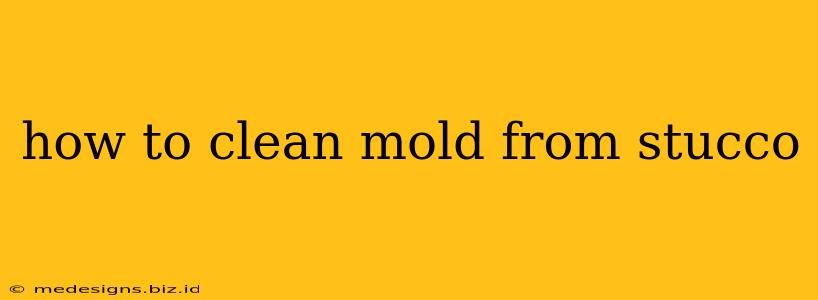Mold on stucco is not just unsightly; it can also pose health risks. This comprehensive guide will walk you through the safe and effective methods for removing mold from your stucco surfaces, ensuring a clean and healthy exterior.
Identifying Mold on Stucco
Before you start cleaning, it's crucial to correctly identify the problem. Mold appears in various colors, from black and green to gray and white. It often grows in damp, shaded areas of your stucco. If you see discoloration, a slimy texture, or a musty odor, you likely have mold. For large infestations or if you suspect toxic mold, it's best to contact a professional mold remediation service.
Preparing for Mold Removal
Safety first! When tackling mold, always prioritize protection:
- Wear protective gear: This includes gloves, safety glasses, an N95 respirator mask (to prevent inhaling mold spores), and long sleeves/pants.
- Work in a well-ventilated area: Open windows and doors to allow for airflow. If possible, use a fan to help circulate the air.
- Contain the area: If the moldy area is significant, use plastic sheeting to contain the spores and prevent spread.
Cleaning Mold from Stucco: Step-by-Step
The best method depends on the severity of the mold infestation. For minor mold growth, a simple cleaning solution might suffice. For larger areas, a more aggressive approach may be necessary.
Method 1: Cleaning Minor Mold Growth
This method is ideal for small, superficial mold patches.
- Prepare your cleaning solution: Mix a solution of one part bleach to ten parts water in a bucket. Caution: Bleach is corrosive. Always add bleach to water, never water to bleach.
- Apply the solution: Using a stiff-bristled brush or scrub brush, apply the solution to the affected area. Work in small sections.
- Scrub gently: Scrub the mold gently but thoroughly, ensuring you reach all affected areas.
- Rinse thoroughly: Rinse the area with clean water using a garden hose. Allow the stucco to completely dry.
Method 2: Cleaning Moderate to Severe Mold Growth
For larger or more stubborn mold infestations, you might need a stronger approach:
- Power washing: Rent a power washer and use a low-pressure setting to gently remove the mold. Be careful not to damage the stucco surface.
- TSP solution: Trisodium phosphate (TSP) is a powerful cleaner that can effectively remove mold. Follow the manufacturer's instructions carefully, as TSP can be harsh. Always wear protective gear.
- Mold killing solution: Use a commercial mold killing solution. Follow the product instructions carefully. Again, protective gear is crucial.
- Rinse thoroughly: After using any strong cleaning solution, rinse the stucco thoroughly with clean water.
Preventing Future Mold Growth on Stucco
Once the mold is removed, taking steps to prevent its return is crucial.
- Repair any leaks or cracks: Moisture is the primary culprit in mold growth. Address any sources of leaks or water damage promptly.
- Improve drainage: Ensure proper grading around your foundation to direct water away from your stucco.
- Increase airflow: Improve air circulation around your home to prevent moisture buildup.
- Regular inspections: Regularly inspect your stucco for signs of mold growth and address any issues promptly.
When to Call a Professional
For extensive mold infestations, or if you're unsure about tackling the problem yourself, it's best to call a professional mold remediation service. They have the expertise and equipment to safely and effectively remove mold, preventing further health risks and property damage. Don't underestimate the potential dangers of mold; safety should always be your top priority.
By following these steps, you can effectively clean mold from your stucco and prevent future infestations. Remember, safety and prevention are key to maintaining a healthy and attractive home exterior.
